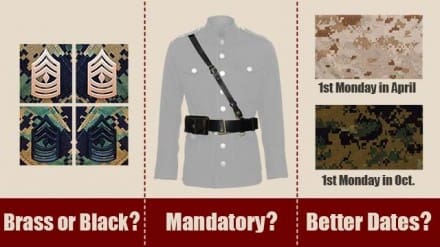The Marine Corps has greatly increased the exploration of 3-D printing (also known as additive manufacturing) and uses it to reduce maintenance costs, increase equipment readiness and improve combat effectiveness. Additionally, it offers the Corps opportunities to solve day-to-day and low-risk challenges, such as those encountered on aircraft, weapons, vehicles and communications equipment, by offering the capability to repair and replace individual parts onsite.
3-D printing uses a digital file from a computer to create three-dimensional solid objects. An object is created by laying down multiple layers of material consecutively until the entire item matches its digital file. Instead of waiting for a manufacturer to build a replacement part for broken equipment, Marines can print whatever customized item they need right away.
“An AAV that is sitting on a forward operating base or a ship waiting for a part is not doing its job, and Marines are less effective because of it,” said Capt. Matthew Friedell, 3-D printing project officer in MCSC’s Systems Engineering and Acquisition Logistics. “3-D printing allows us to get that AAV back into the fight or even gets Marines the weapons they need.”
MCSC’s role is to validate that 3-D printed parts are safe and certified for use on the systems and equipment it fields to Marines. The SEAL team conducts testing and experimentation to find new ways to use 3-D printing technology.
This summer, for the first time in Corps history, 3-D printing was used to create a new part for an AAV. The part was installed and driven at the AAV product director’s Engineering Maintenance Test Site in Ladysmith, Virginia. In partnership with John Hopkins University Applied Physics Laboratory, MCSC’s SEAL team installed a 3-D printed steel yoke shifter onto an AAV. The yoke was redesigned for AM and fabricated using a metal AM process called Direct Metal Laser Sintering. The yoke shifter is part of an assembly actuated by the driver of the AAV, and engages and disengages the power take-off from providing input to the Hydrostatic Steer Unit. When the AAV is being towed by another vehicle, the HSU, which is responsible for controlling the steering of the vehicle, must be disengaged to prevent mechanical damage.
“It’s an essential part to ensure the vehicle can steer and function properly,” said Craig Hughes, Marine Corps additive manufacturing project manager at John Hopkins University Applied Physics Laboratory.
Marines have been embracing 3-D printing for several years now, Friedell said. There are more than 40 units using 3-D printers in the field to create replacement vehicle and weapon parts out of plastic.
“This capability totally changes the way logistics are applied in warfare,” said Friedell. “Not only can we now fix weapons and vehicles faster, we can adapt in real time to meet new requirements.”
Marines are using 3-D printing to build drones, buildings, vehicles and other items out of various materials, including concrete and metals. 3-D printing is especially promising in combat zones where Marines can “quickly reproduce essential parts that might otherwise have to be shipped from a stateside location or a distant Defense Logistics Agency hub,” said Lt. Gen. Michael G. Dana, deputy commandant for Installations and Logistics, in a recent interview with Military.com. Because of the possibilities 3-D printing provides, Dana has become a vocal advocate for the innovative technology.
In the future, Friedell envisions that the Corps will have the ability to print customized vehicles to counter emerging threats right on the battlefield.
“The Marine Corps must adopt this concept at all levels to fully gain its benefit,” he said. “If we do not, we will fall behind our enemies as they’ll be able to repair their vehicles faster and with greater precision than us. We are delivering on our requirements from the commandant and embracing this rapidly growing technology.”


















































































































